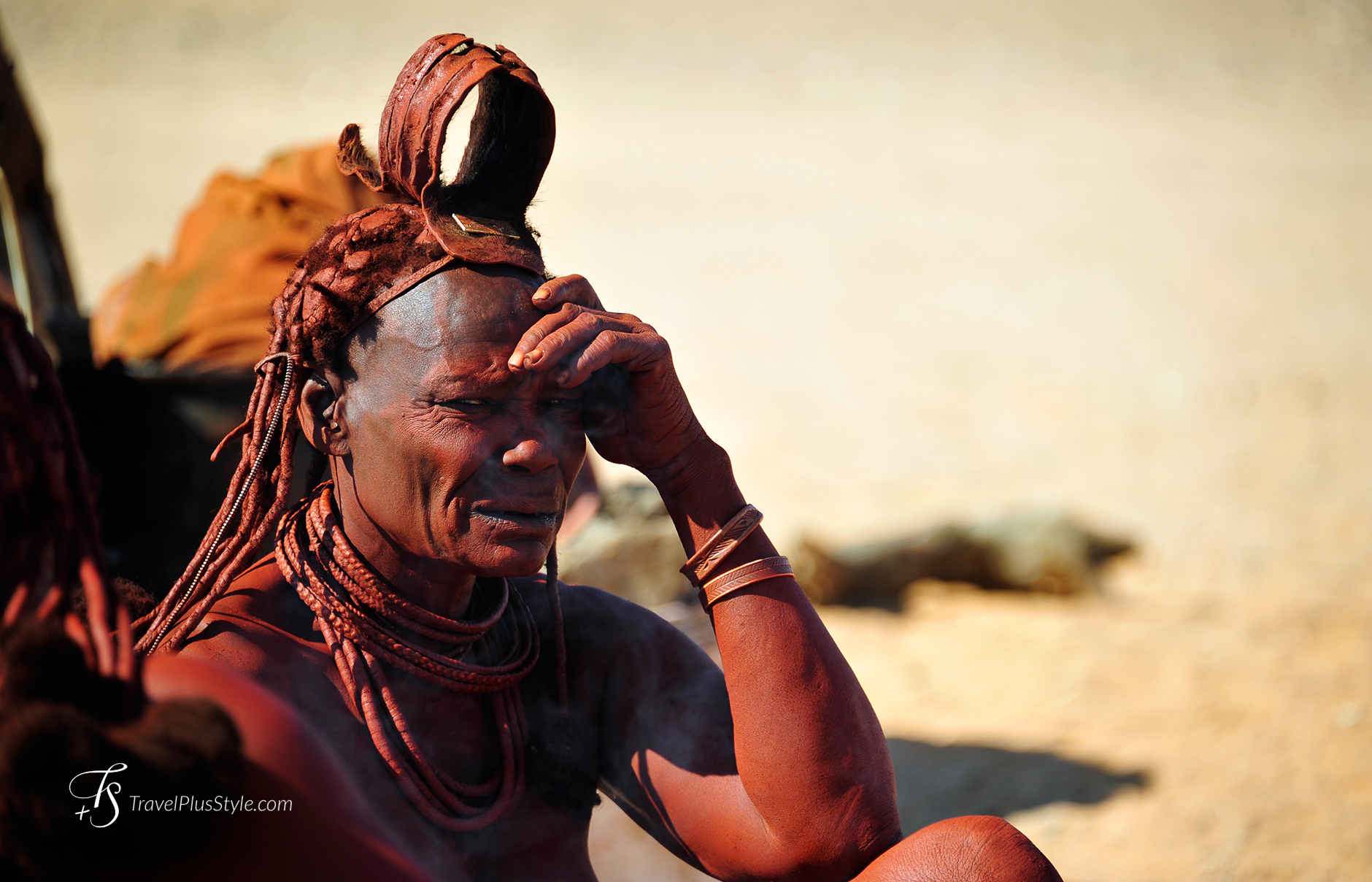

The Himba live in Kaokoland: a vast, extremely inhospitable territory in the most remote part of Namibia. It borders Angola to the north, along Kunene river, where some Himba tribes live—on the other side of the river.
Journey to these parts is arduous, and nowadays only feasible via a light aircraft. It’s a blessing though, in a way. Thanks to this remoteness Himba survived the troubled colonial era and managed to eschew westernisation. Today most people here still live a more or less traditional existence, with the cattle at the centre of their lives, maintaining a fragile balance with nature. But things are changing.

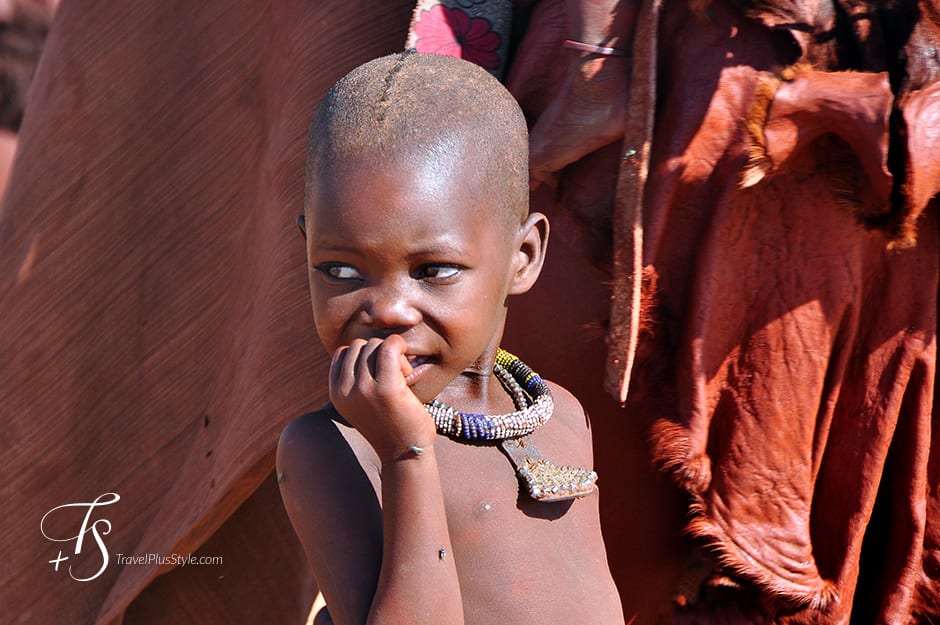
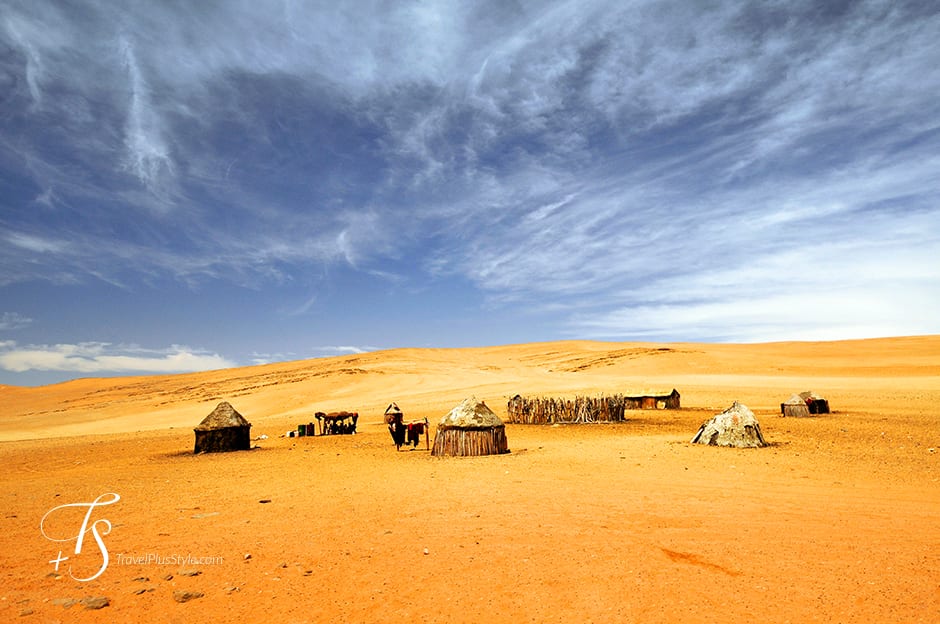

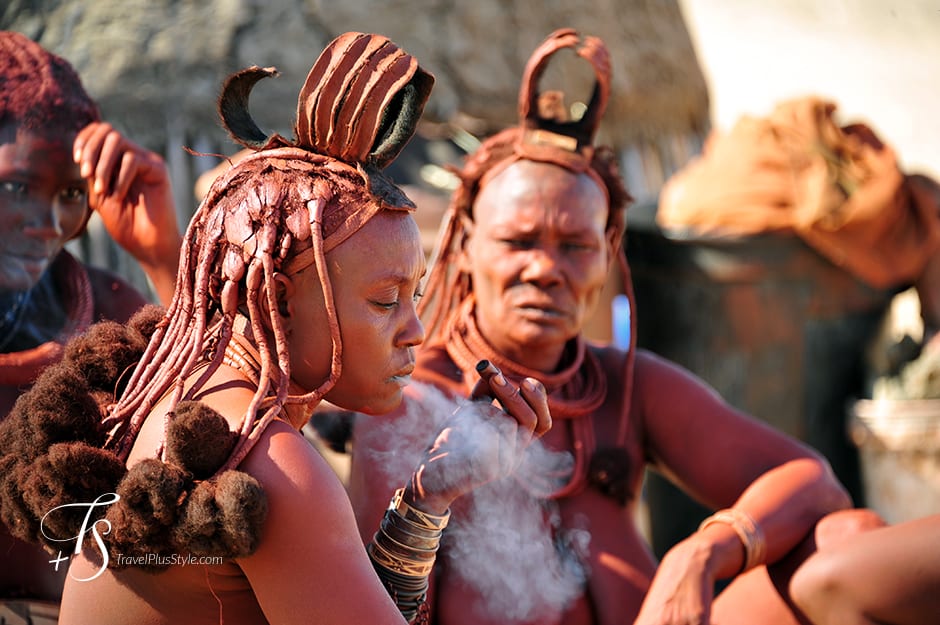
“Don’t start your farming with cattle, start it with people”—Himba proverb
The unstoppable force majeure of modernity is slowly changing lives in Kaokoland. The traditional, small temporary hamlets of the Himba tribe are gradually disappearing—but it would be shallow to brand this change as simply a “bad” thing. The Himba tribesmen may don Western t-shirts more often these days, but their children do get send to school. Some families settle on the banks of the Kunene river, leaving behind the nomadic life, but modern machinery helps irrigating crops, giving them better food security.
Still, we consider ourselves lucky to have been able to visit one of the last authentic, aboriginal hamlets. “You may be meeting the last generation that clings to the traditional way of life”, observed our guide from the Serra Cafema camp.



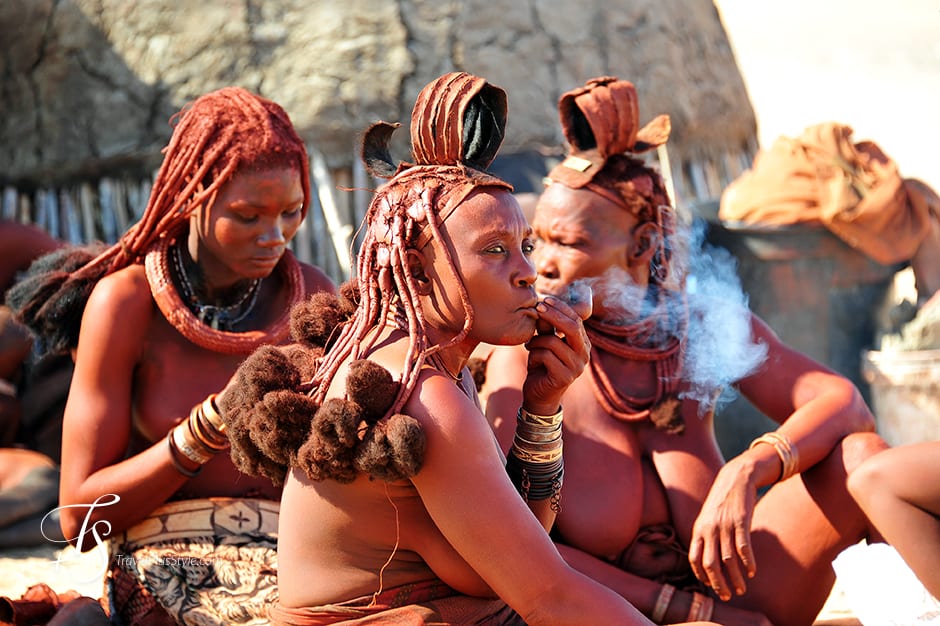
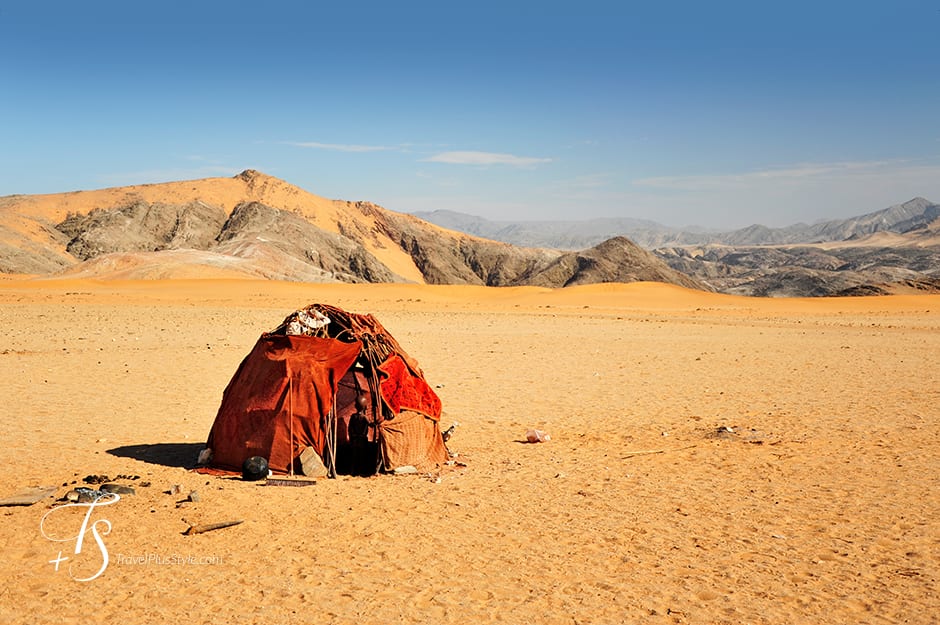
Not only it was a privilege to visit the Himba hamlet, but just to travel to Kaokoland was something special. This region is a natural wonder: an enormous red desert and black inhospitable mountains—with the Kunene river, a glittering strip of life, weaving its way through the desolate landscape.
We couldn’t help but wonder, how can people live here? It was beautiful, yet so forbidding. The evidence was plentiful: carcasses of Oryxes, animals so well adapted to the harshest conditions, were too easy to find.
“A Himba is nothing without his cattle.”—Himba proverb
But people can, and do live here. As we descended into a dry valley flanked by gigantic shards of black mountains, we spotted several dark dots of mud-and-dung huts far below, tiny in comparison to the vast landscape. A human encampment, surrounded by nothing but desolate emptiness.

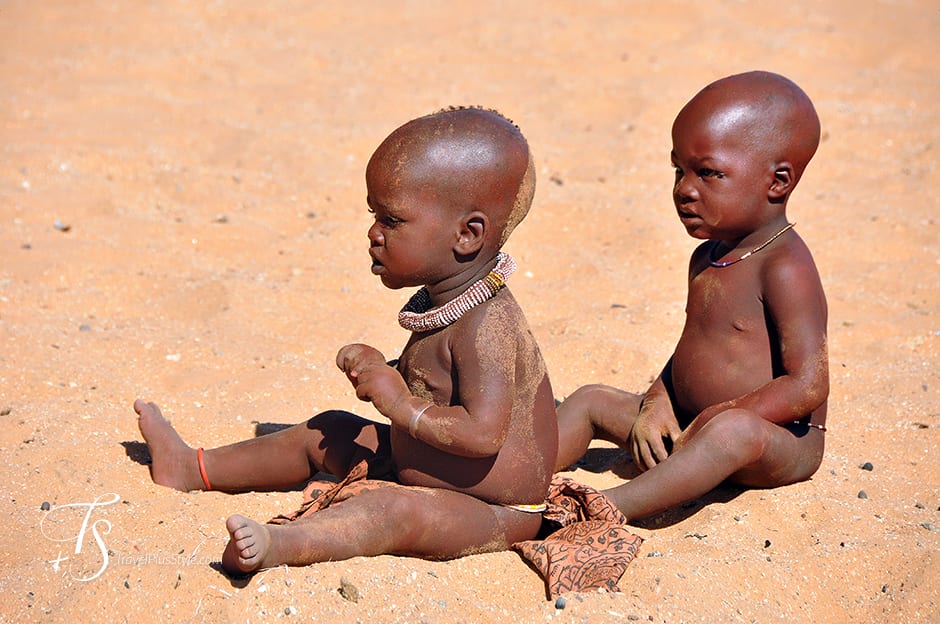

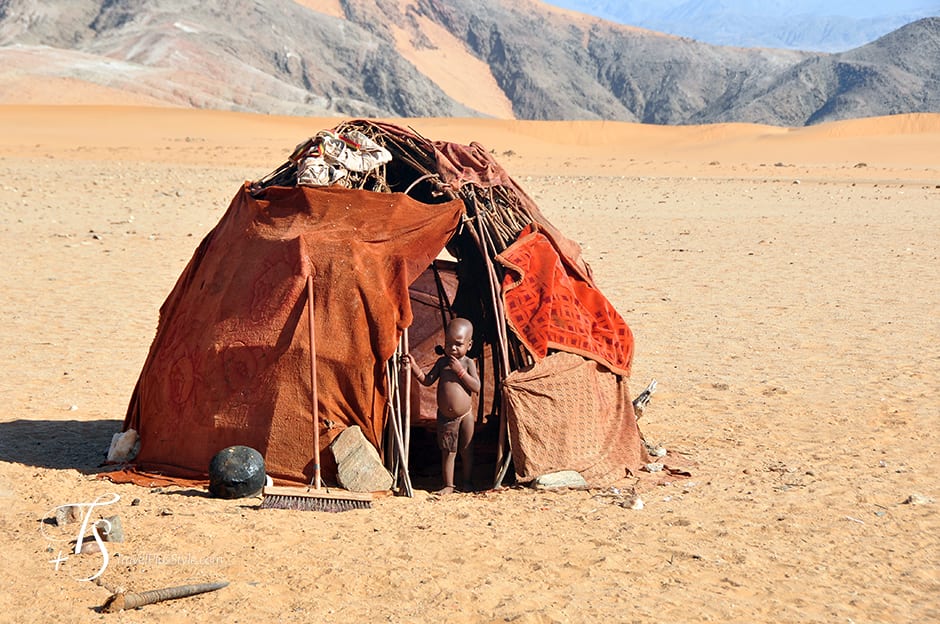
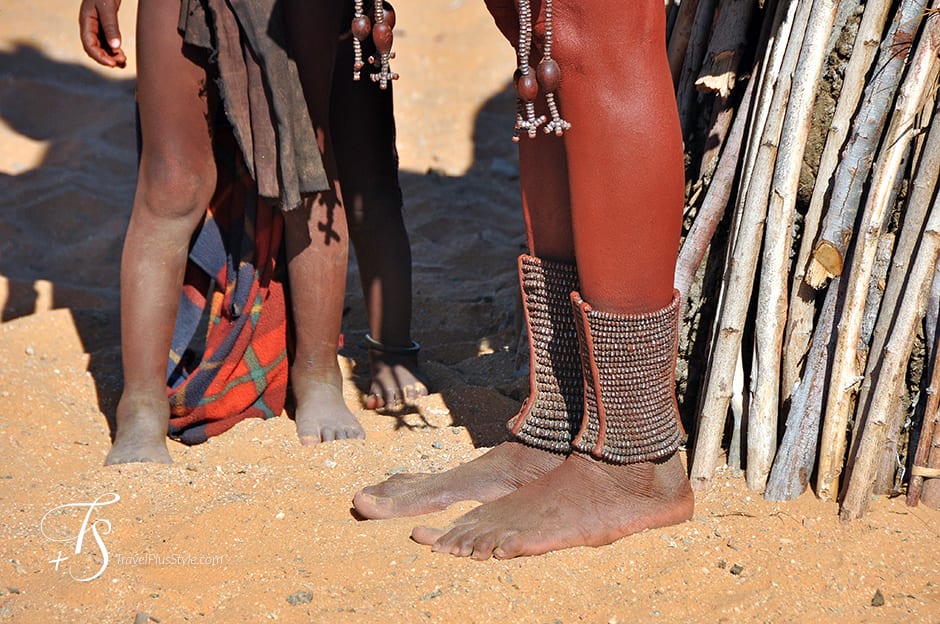
“You may be meeting the last generation that clings to the traditional Himba ways of life” —our guide from the Serra Cafema camp
The Himba lifestyle reflect its adaptation to the harsh environment. The red paste (known as otjize) the women apply to their bodies protects the skin from parasites and weather, and acts as a lotion (by the way, this mixture of red ochre, butter and resin from the Omuzumba shrub appears to be doing wonders to the skin!).
Himba women wear elaborate clothes and hairstyles that change depending on age and social and marital status. They use what they find to enhance their clothes and make jewellery, not uncommon are bits of metal or other throwaways, tiny reminders of the western civilisation existence.

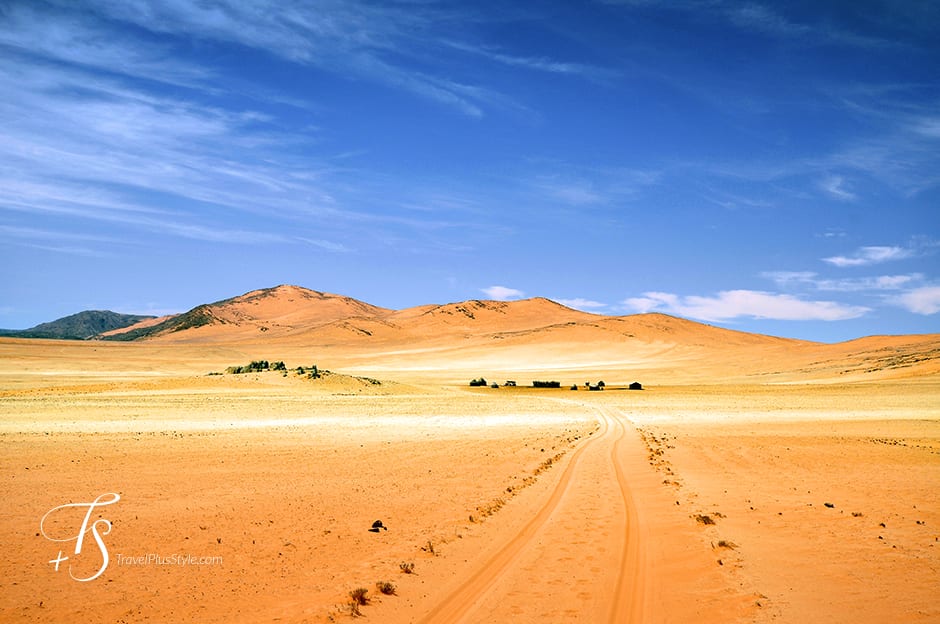
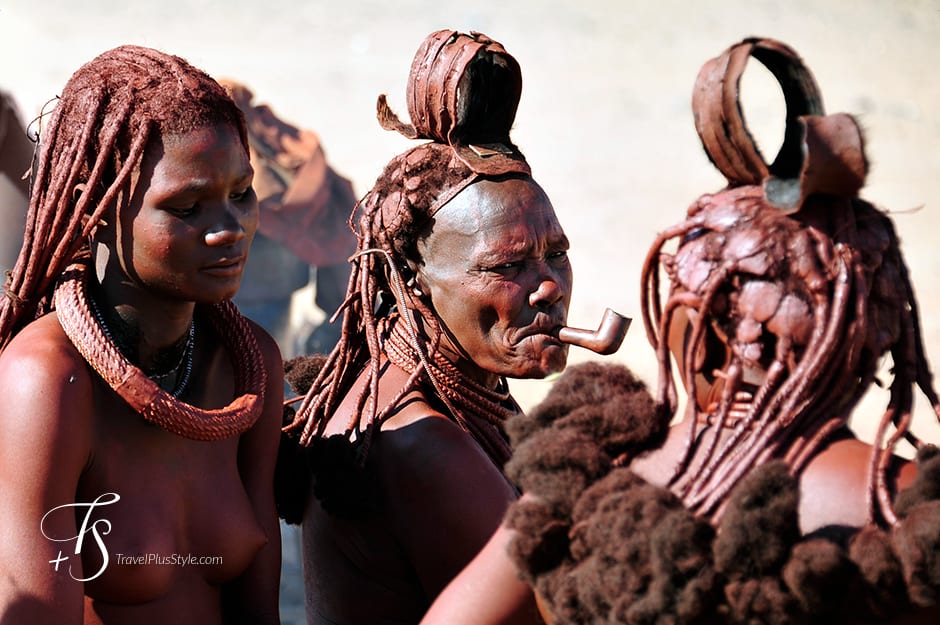


The occasional radio or a t-shirt, especially in the Himba families on the Angola side, are the only echoes of the 21st century world. There isn’t much else Himba culture has in common with the western one—the matter-of-factly approach to nudity being perhaps the most visible thing that sets it apart. But for the locals female breasts are not considered sexual in the same way as in other cultures—and prudish attitudes are quite foreign.
“Serra Cafema may be located in one of the remotest destinations in all of Africa—but reaching it is worth every effort.”—from our Serra Cafema review
Not far from the Himba dwellings, on the banks of the river lies Serra Cafema, the luxurious camp pampering to the best of tastes. This is where we stayed, from here we explored the area and drove to visit the village. The contrast could not have been stronger. We felt like transported from one fantastical dream to another.

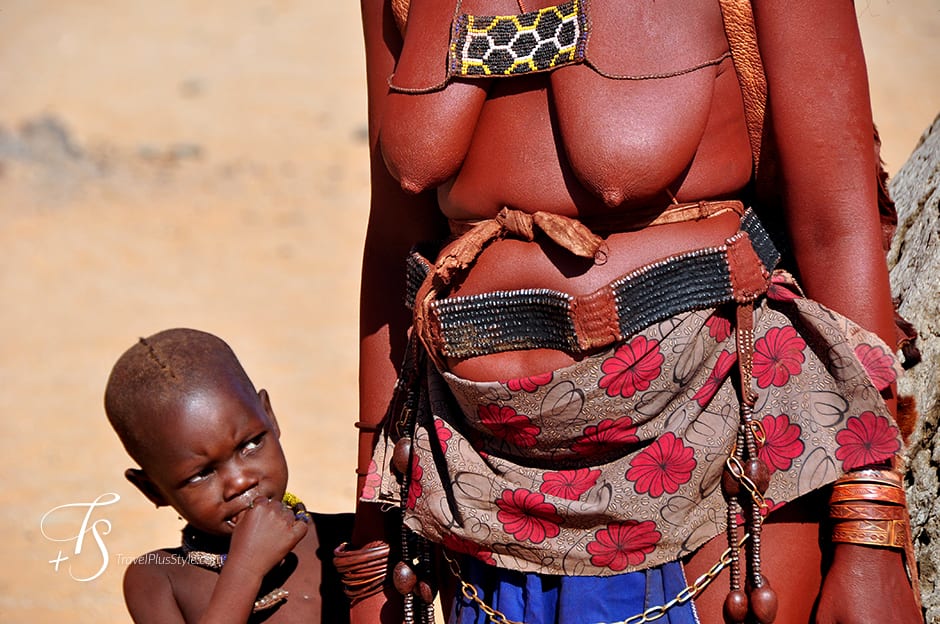
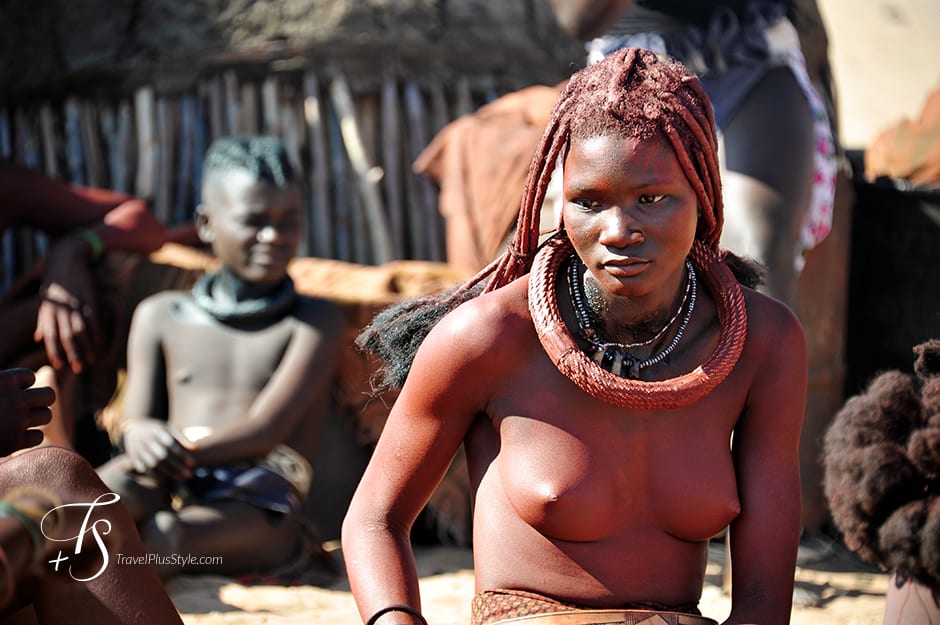
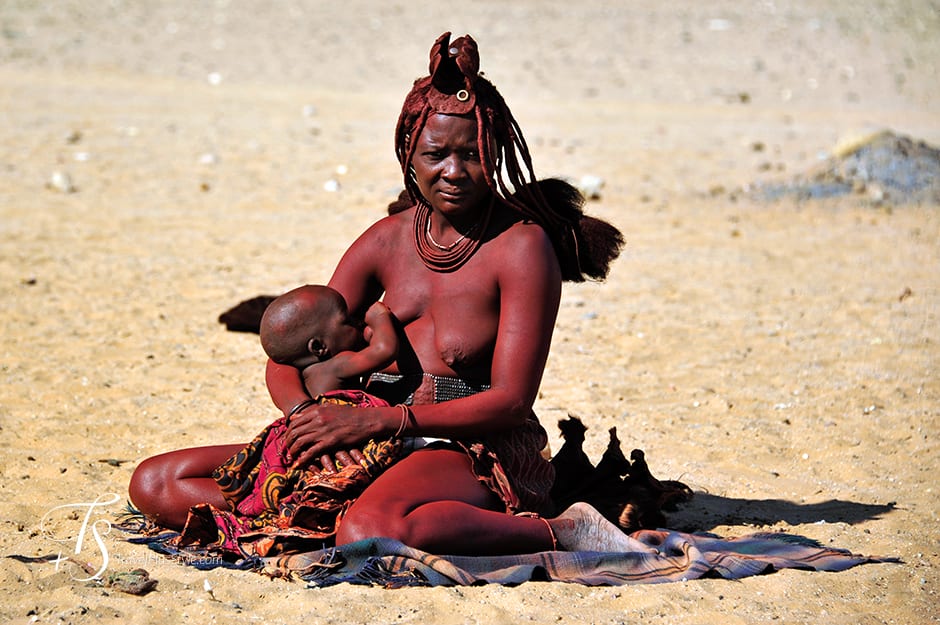

Combination of incredible landscapes, luxury of the Serra Cafema safari camp and the unique experience of connecting to the very dawn of humanity, glimpsed in the life of aboriginal tribe made this trip one of the most memorable.
All photos and text © TravelPlusStyle. Photos by Laskowski & Zadros.
Author: Travel+Style. Last updated: 03/05/2021